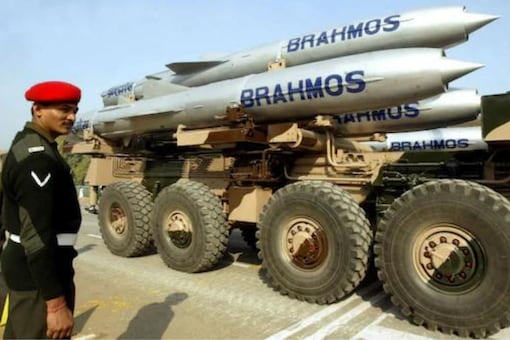
By Amber Afreen Abid 6 Augusat 2021
During a test firing on Monday, July 12, 2021, India’s BrahMos supersonic cruise missile fell quite shortly after the takeoff on Odisha coast. The missile can target up to the range of 450km. the test, according to the reports, failed because of the glitches with propulsion system. However, the conjoint team of scientists from Brahmos Aerospace Corporation and DRDO (Defence Research and Development Organization are working to ascertain the exact cause of failure, which is still unknown.
The Brahmos missile consists of two-staged missile; the first stage comprises of the solid propellant booster engines, which gets separated after boosting it to the supersonic speed. The second stage, which comprised of the ramjet engine, then pushes the missile to nearly the speed of Mach 3, in the cruise phase. Supersonic cruise missiles had earlier been used to hit targets below the range of 300km, which is inducted in to the Indian armed Forces; but now they have been upgraded to the speed of 450km with the claim of supersonic speed. Many other versions of the missile had been earlier developed by Brahmos Aerospace Corporation in a Joint Venture with Russian NPO Mashinostroyeniya (NPOM). The BrahMos missile is principally designed against the ships and land based targets. The BrahMos is named after two river of India and Russia, the Brahmaputra river of India and Moskva river of Russia, as it is Joint Venture of two states.
The failure of India’s Brahmos cruise Missile bosom signals of the credibility of India’s nuclear deterrent. According to the Indian official nuclear doctrine, India maintains the nuclear posture of No-First Use (NFU) and credible minimum deterrence, moreover, India intends to respond massively and aggressively against the nuclear first strike. But, here comes the question of credibility! The credibility with which, a country wants to respond and tries to create deterrence, has to be assured of its capability and its force postures. A country which maintains the posture of no-First Use has to be assured of the functionality and robustness of its arsenals in order to signal a high score of credibility to its adversary.
The failing of Brahmos supersonic cruise missile test at this point, where India intends to develop the hypersonic missiles, the Brahmos II, which according to India would be an advanced version of this supersonic cruise missiles, with the speed more than it, of Mach 5, which is almost five times the speed of sound. It raises concerns about the efficacy of Indian technology, and weakens its deterrence posture, as concern are there about the robustness of India’s technological capability and hence its deterrence. The failure of the test indicates that Indian arsenals are not much reliable, may it be a single test or the in the delayed process of building SSBM, even a minor fault and such delay in the making of missies and other technology indicates the incredibility at India’s part. India also claims to develop the missiles indigenously, whereas, almost all of its technology is imported from other countries. Well, the failure of the Brahmos cruise missile test could also be because of any key error in design and control of technology. This, indeed, is a great cause of worry for the Indian scientists and establishment.
The development of missiles s quite expensive and before incorporating into service proper time and tests should be conducted to ensure its reliability. Without being assure of one’s technology and capability, it is futile to incorporate for using in the military complex, as it leads to the weakening of deterrence posture in the longer run. A state is required to make watchful and cautious steps and consideration, in order to ensure the longer shelf-life of missies and other technology.
As according to the Indian nuclear doctrine, if India wants to maintain a posture like NFU, it’s capability is required to be credible else the communication of such failures of the already inducted technology, which India is trying to further advance becomes an anecdote of failure and weakens credible minimum deterrence posture of India. For a credible posture a country should have a strong command and control infrastructure and greatly requires a high level of missile preparedness, which India is lacking as seen in the failure of Brahmos cruise missile test.
